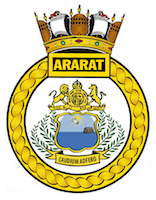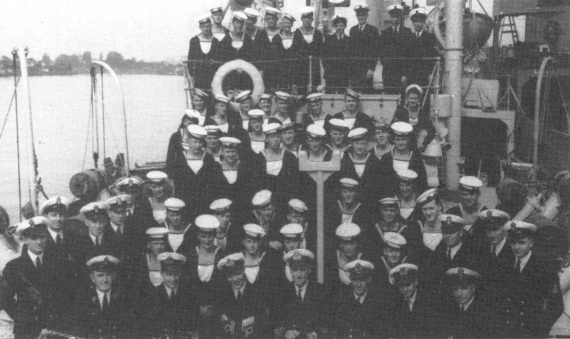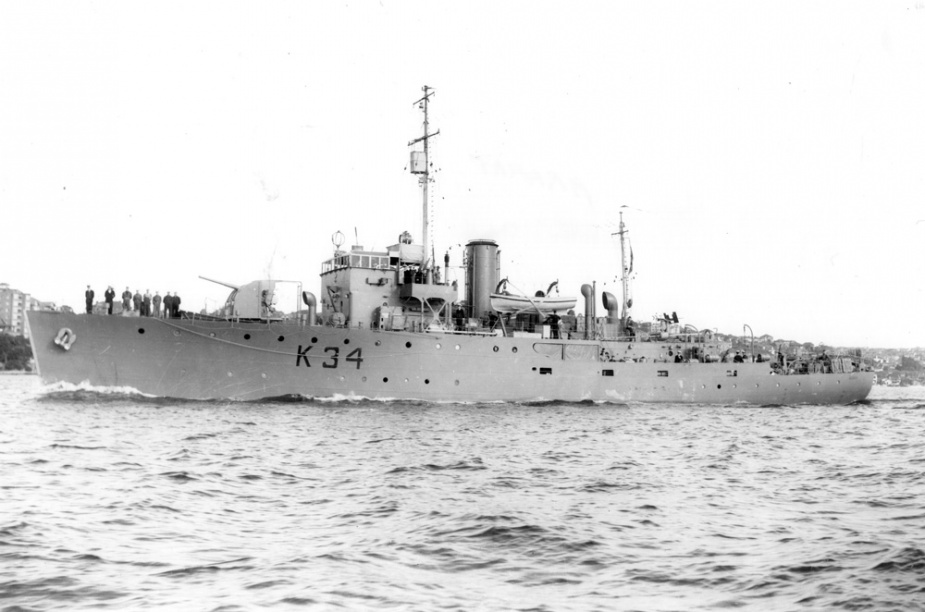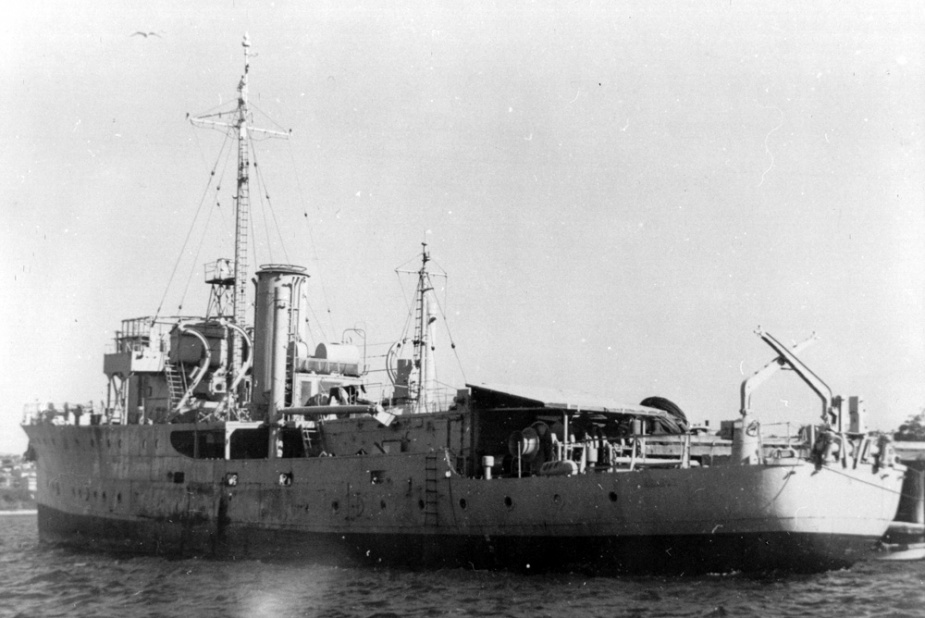HMAS Ararat (I)
| Class |
Bathurst Class |
|---|---|
| Type |
Australian Minesweeper |
| Pennant |
K34/M34 |
| Nickname |
The Rat |
| Builder |
Evans Deakin & Co in Brisbane |
| Laid Down |
6 July 1942 |
| Launched |
20 February 1943 |
| Launched by |
Mrs Fadden, wife of the Leader of the Australian Country Party |
| Commissioned |
16 June 1943 |
| Decommissioned |
11 April 1947 |
| Fate |
Sold |
| Dimensions & Displacement | |
| Displacement | 590 tonnes |
| Length | 56.69 metres |
| Beam | 9.45 metres |
| Draught | 2.59 metres |
| Performance | |
| Speed | 15 knots |
| Complement | |
| Crew | 85 |
| Propulsion | |
| Machinery | Triple expansion engine, 2 shafts, 2000 horsepower |
| Horsepower | 2000 |
| Armament | |
| Guns |
|
| Other Armament | Depth charges chutes and throwers |
| Radars | Types 271 & 291 radar fitted in 1944 |
| Awards | |
| Battle Honours | |

HMAS Ararat (I) was one of sixty Australian Minesweepers (commonly known as corvettes) built during World War II in Australian shipyards as part of the Commonwealth Government’s wartime shipbuilding programme. Twenty were built on Admiralty order but manned and commissioned by the Royal Australian Navy. Thirty six (including Ararat (I)) were built for the Royal Australian Navy and four for the Royal Indian Navy.
HMAS Ararat was laid down in the yard of Evans Deakin & Co in Brisbane on 6 July 1942 and was launched on 20 February 1943 by Mrs Fadden, wife of the Leader of the Australian Country Party.
Ararat (I) commissioned at Brisbane on 16 June 1943 under the command of Lieutenant Norman M Muzzell RANR(S).
The ship commenced her operational duty during the first week of August 1943 as a convoy escort vessel on the east coast of Australia.
On 17 October 1943 she proceeded from Townsville escorting her first New Guinea convoy for Milne Bay and thereafter continued duty as an escort vessel to the forward areas until the close of the year.
In 1944 Ararat (I) continued escort and patrol duties between Queensland and New Guinea until March when she transferred to Langemak, New Guinea. Until May, when she proceeded for Melbourne to refit, she was engaged mainly on escort and patrol work in the New Guinea and New Britain areas. During this period Ararat (I) gained the distinction of being the first ship of her class to visit the newly captured Allied territory at Cape Gloucester and Arawe, New Britain.
Following her refit, Ararat (I) returned to New Guinea waters in July 1944 and resumed operational duty on escort and patrol work between Langemak and Hollandia. On 11 August she transferred to the operational control of the United States naval command at Manus Island. Based there until the close of 1944 she was almost constantly at sea on escort and patrol to the forward areas of the rapidly developing Allied offensive. Though mostly in New Guinea waters during this period, Ararat (I)’s duties at times took her as far afield as the Palau Islands in the Pacific.
On the night of 19 October 1944, Ararat (I)’s sister ship HMAS Geelong sank after a collision with the United States tanker York (operated by the United States War Shipping Administration) off the north coast of New Guinea. All hands were saved by York and after being landed at Langemak on the morning of 19 October were taken to Milne Bay, some by aircraft and the others by Ararat (I).
The first six months of 1945 were spent on escort, patrol and guard ship duties, mainly in the Morotai area, escorting convoys for Mios Woendi and onward. In March 1945 she returned briefly to Australia when she visited Townsville and in June she was sent to Borneo where Australian troops were engaged in operations against the Japanese forces ashore.
On 22 July 1945, less than a month before the end of hostilities, Ararat (I)'s war service came to an end when she departed Langemak en route for Adelaide to refit.
On 22 October 1945 Ararat (I) joined the 20th Minesweeping Flotilla (led by HMAS Swan (II)) for post war mine clearance operations. As a minesweeper, she operated first in Australian waters (October 1945 to April 1946) and then, until November 1946, in the waters of New Britain, New Ireland and the Solomon Islands.
On 13 November she arrived at Sydney from Rabaul, her work with the 20th Minesweeping Flotilla completed and her seagoing career ended. She had steamed 109,000 miles. Ararat (I) paid off into the Reserve Fleet at Sydney on 11 April 1947.
After a lengthy period in Reserve, Ararat (I) was sold on 6 January 1961 to Burns Philp & Co Ltd, Darwin. She was later resold to Japanese interests. Under that ownership she carried out salvage operations in Darwin Harbour.
The vessel left Darwin on 20 July 1961, under the control of the Fujita Salvage Company of Japan, towing a floating crane.













